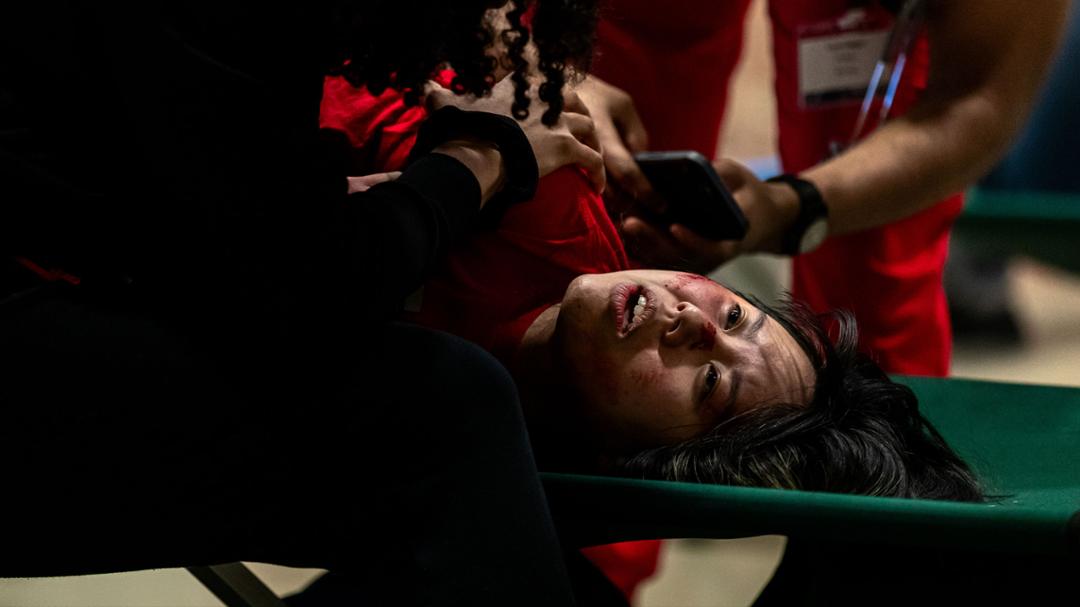Mallory Prucha and theater students bring human element with a touch of theatrics to Texas Tech University Health Sciences Center.
The sound of pounding rain is relentless.
Shrieks accompany rolls of thunder.
Everywhere you look, there are open wounds, blood and hysterical patients of an imagined catastrophe.
It’s Disaster Day 2024, hosted by Texas Tech University Health Sciences Center’s (TTUHSC) Office of Interprofessional Education. Texas Tech University’s School of Theatre & Dance has volunteered actors, makeup artists and costumers to create a simulation for TTUHSC, Angelo State University, and South Plains College students.
The 200 participating students move through three stations, all part of a tornado simulation.
The Texas Panhandle has been overwhelmed with tornadoes this past year. In 2023, West Texas had four tornado-related fatalities – a number not seen since 1970.
The choice of simulation prepares students for a disaster they could likely encounter. A few weeks ago, the Office of Interprofessional Education partnered with Texas Tech’s School of Veterinary Medicine in Amarillo and completed a wildfire simulation.
To make events like this successful, the Office of Interprofessional Education has partnered with Associate Director of Curriculum and Associate Professor Mallory Prucha in the School of Theatre & Dance. She has been an integral part of TTUHSC Interprofessional Education Disaster Day since its inception in 2020.
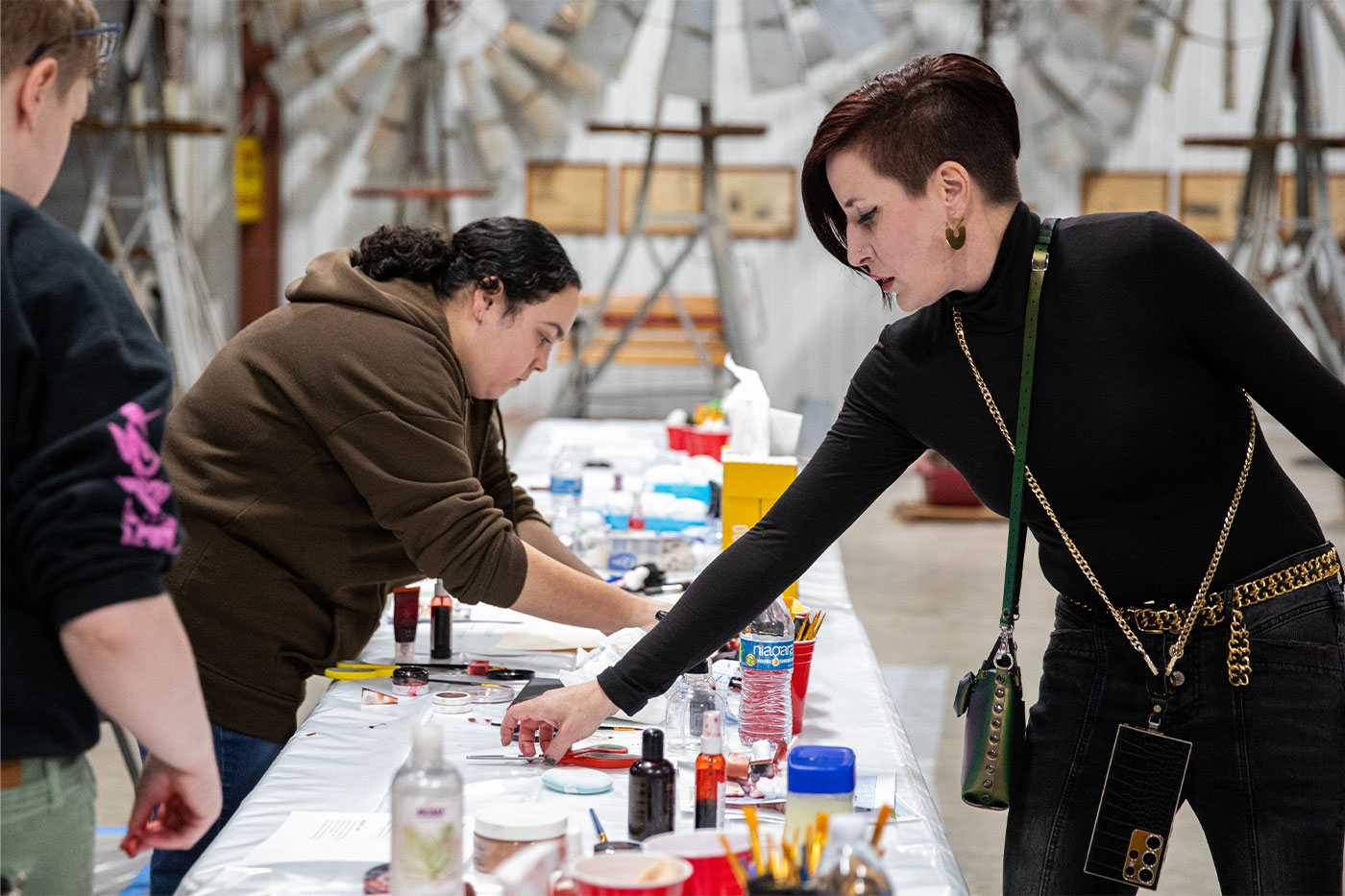
Prucha is a wizard with costume design and moulage, the art of applying mock injuries.
Her work has graced the Kennedy Center American College Theater Festival, the Black Hills Playhouse and countless companies worldwide. Her costumes have set the stage for French Bourgeois, 1950s housewives and the Georgian Era of Sweeny Todd.
Her makeup lifts the features of opera singers, actors and dancers alike.
Prucha uses different materials for this event, though. She has actors in flannel plaid, old blue jeans, pajamas and other items someone might be wearing at the moment a disaster takes place.
Actors are spray painted with brown that mimics dirt. Three tables, end-to-end, are covered in fake blood, and makeup is applied to create bruising, gashes and torn flesh.
It’s enough for anyone squeamish to look away.
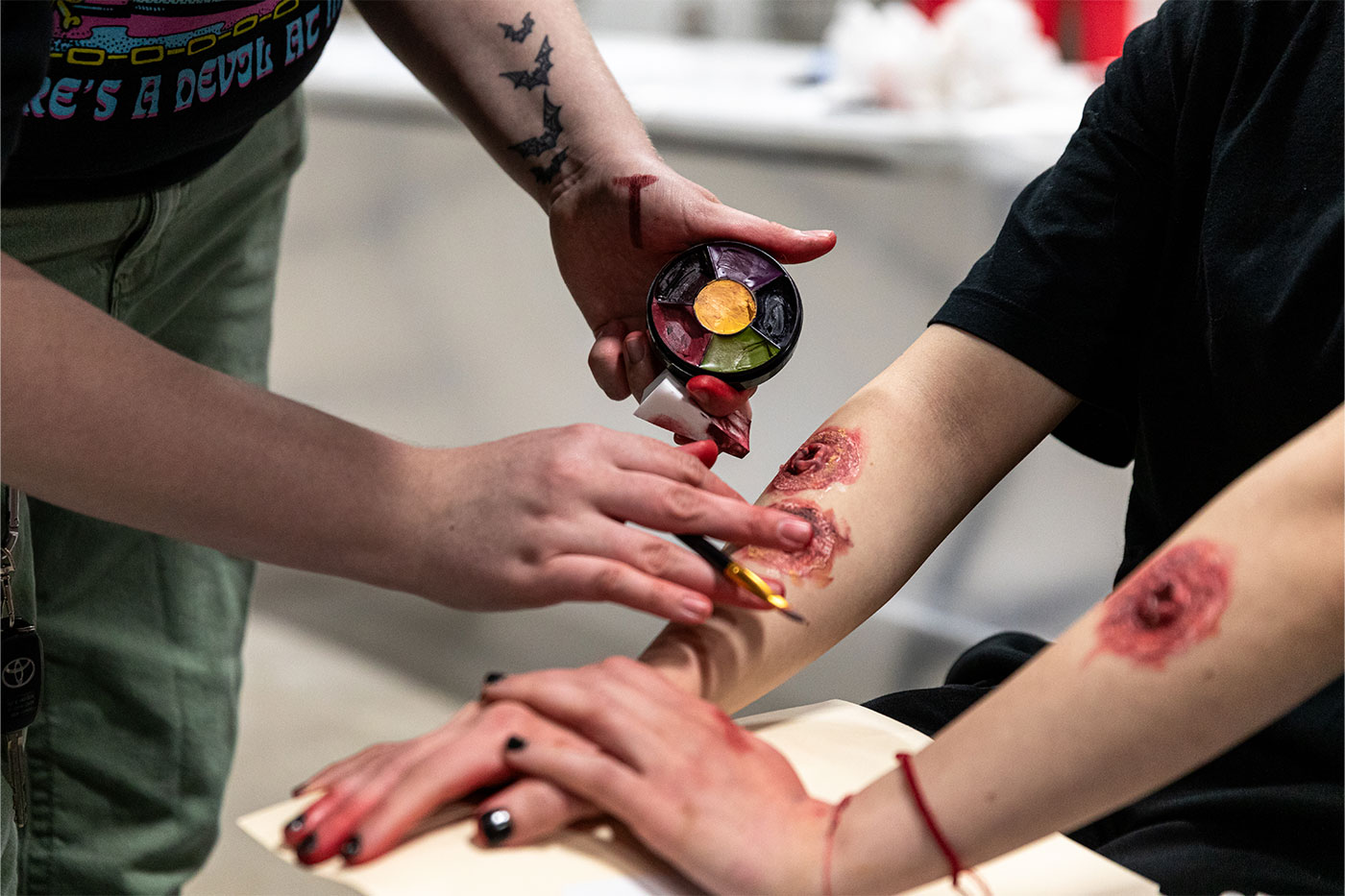
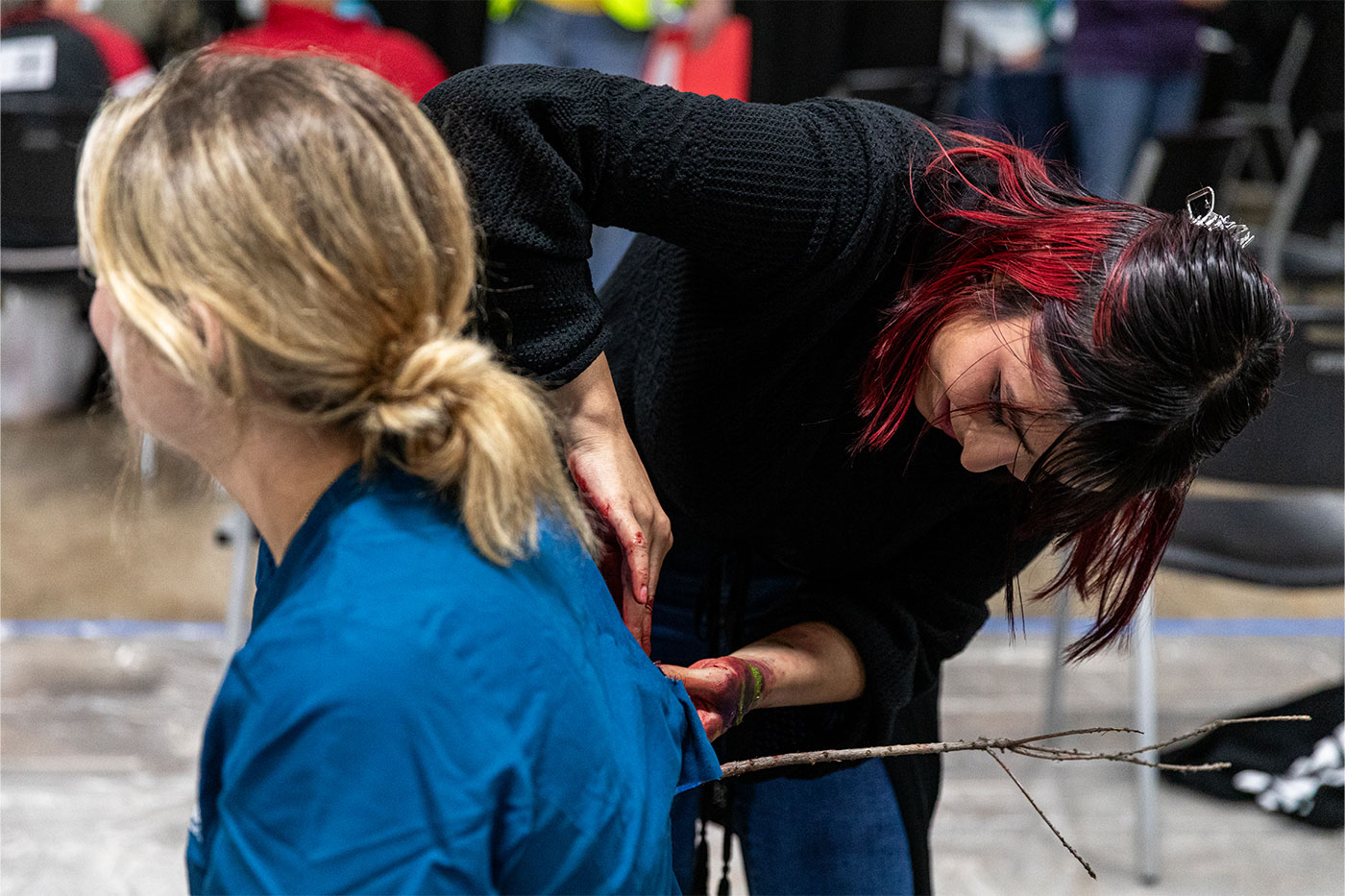
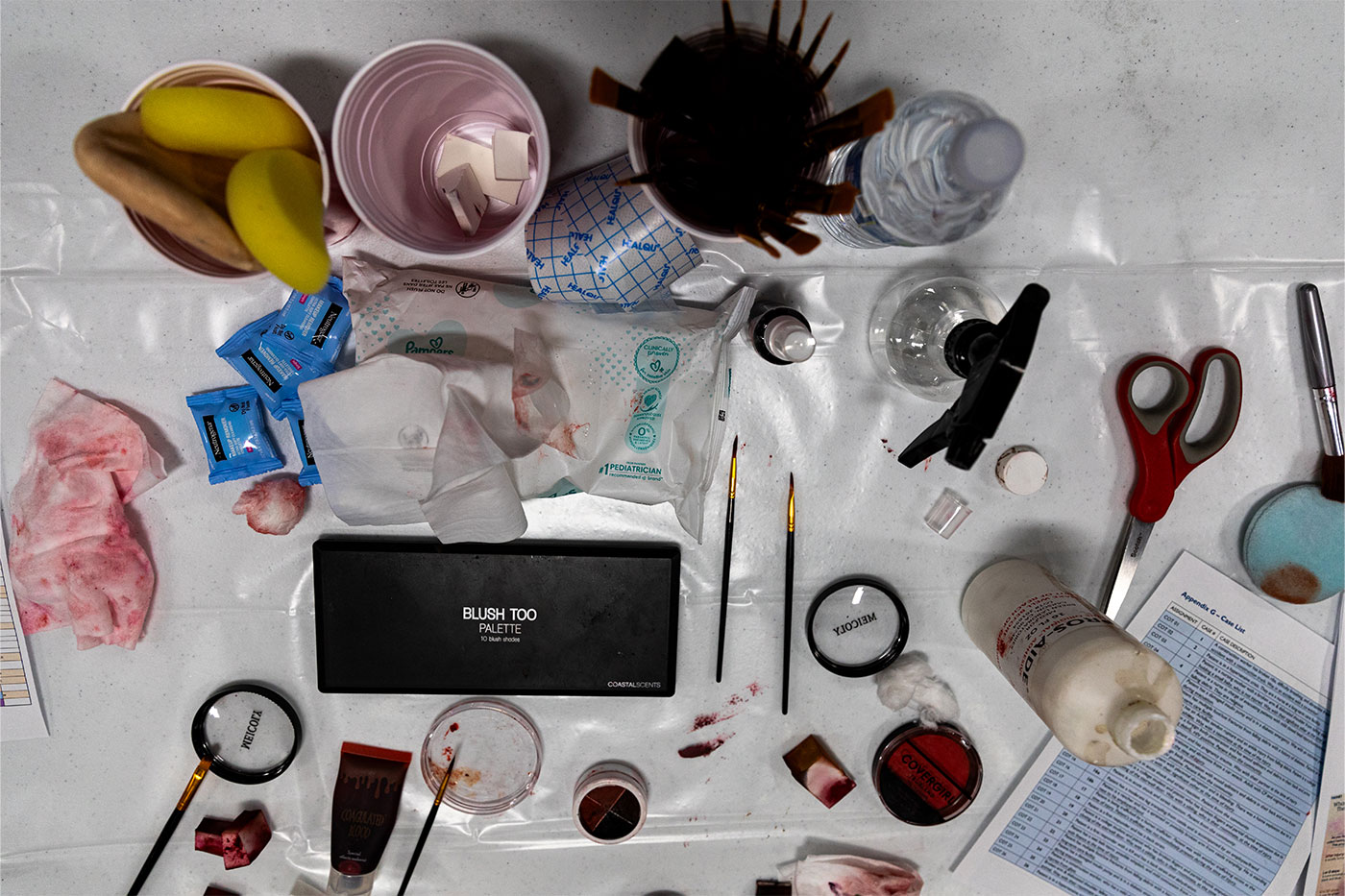
“Using theatric artforms outside their traditional expression allows for collaboration among many disciplines,” Prucha said.
When it comes to using acting and moulage in innovative ways, Prucha has become an expert. She has contributed to exercises that have intersected trainings supported by the U.S. Department of Defense, Homeland Security, and the Emergency Management Department for the City of Lubbock. Her interest in lending theatrical craft and artmaking to socially responsive agencies is so significant that she freelances as the composite sketch artist for the Lubbock Police Department.
Prucha is interested in the intersection of live-action role playing to improve the efficacy of training for law enforcement, first responders, medical practice, disaster-response agencies and more. She hopes the collision of non-arts-based agencies with applied arts and social practice will improve measurable response outcomes, limit barriers to access, and improve inclusive aspects of social services through collaboration.
That’s what Disaster Day is all about.
Hitting Home
Disaster Day is held at the American Windmill Museum on the east side of Lubbock. The open space allows for hundreds of students and volunteers to work side by side.
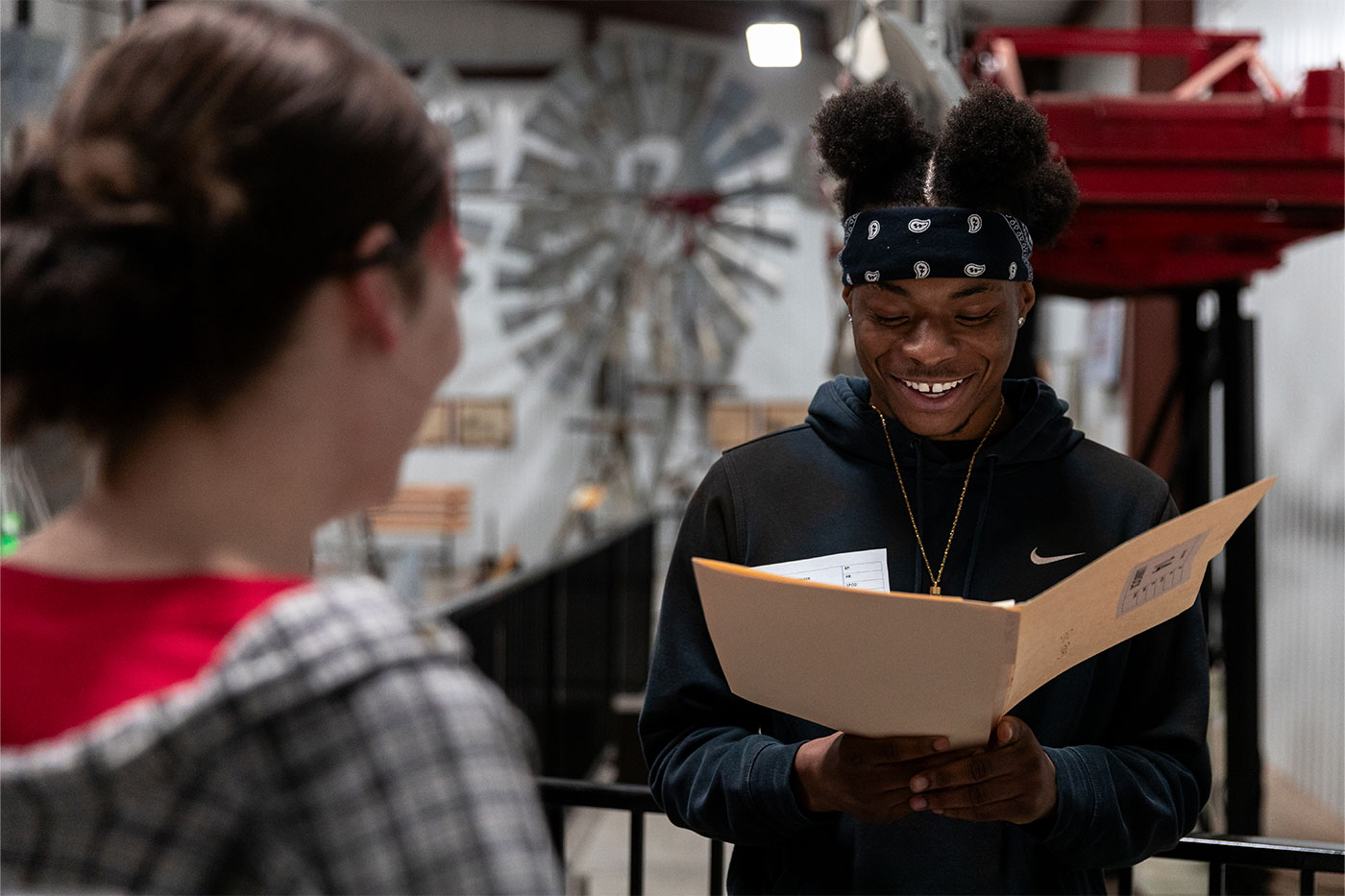
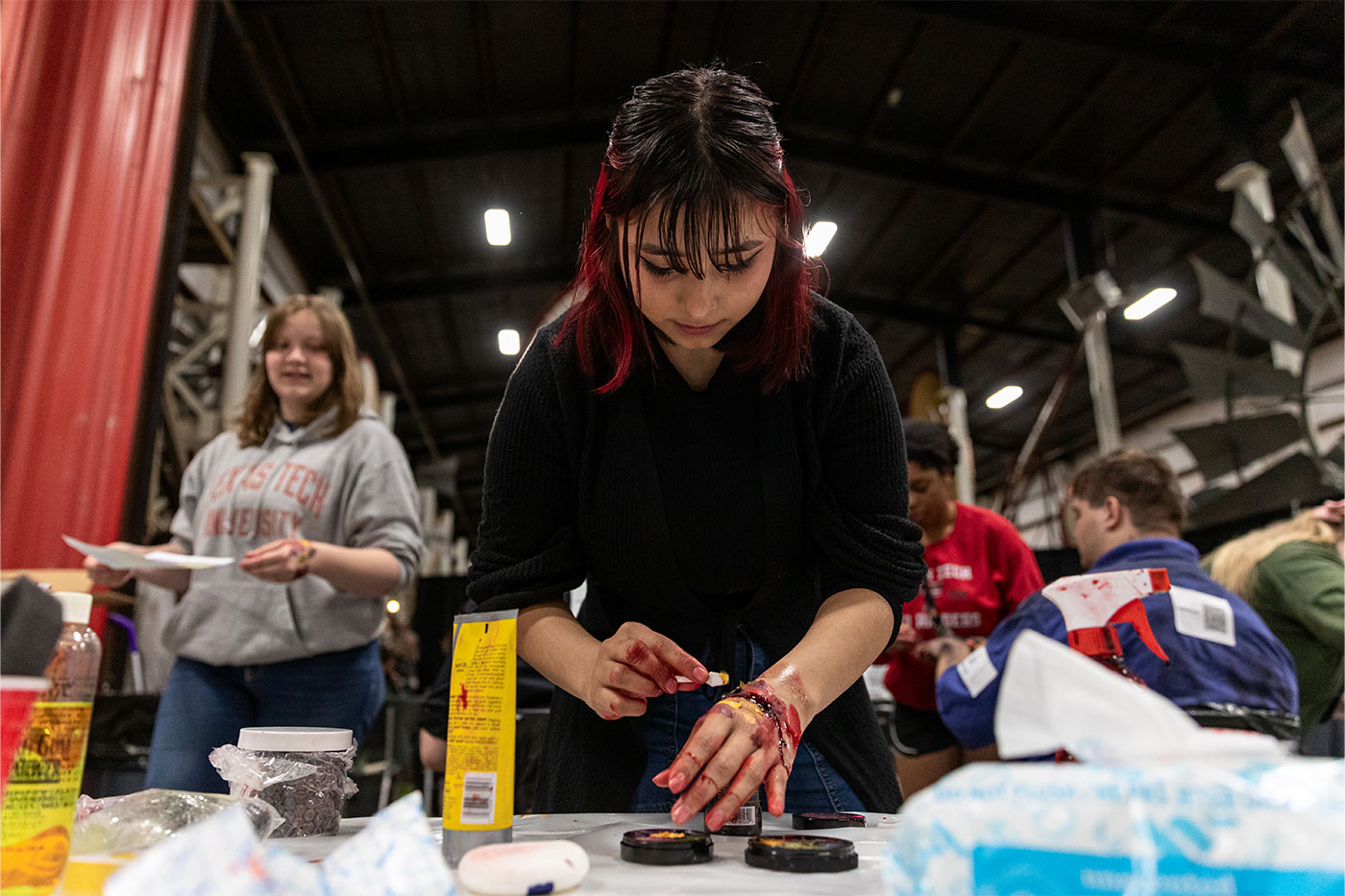
In the triage space where most of the action occurs, the “patients” lay on cots stretching the length of the room. Volunteers from both TTUHSC and the School of Theatre & Dance help create a judgement-free space for students to learn. There are even some undergraduate volunteers from other programs drawn to the event due to personal curiosity or passion for the cause.
One is Naomi Brummett.
Brummett is a Classical and Modern Languages and Literatures major at Texas Tech. The year before she came to college, her hometown of Vernon, Texas, was significantly damaged by an F3 tornado.
“My next door neighbor’s house was demolished,” Brummett said. “It was awful. It was an ancestral home; it was completely lost.”
Luckily for Brummett, the funnel jumped her family’s home.
“We were in the basement, and when we came upstairs there were sirens and lights everywhere,” she said. “I was in total shock.”
According to Brummett, her neighbors are still rebuilding more than a year later. The memory of the storm is seared into the community’s mind.
Brummett volunteers to apply moulage for Disaster Day, preferring to keep her distance from the simulation.
Joyce Lynch, another volunteer, remembers the 1970 tornado that tore through Lubbock.
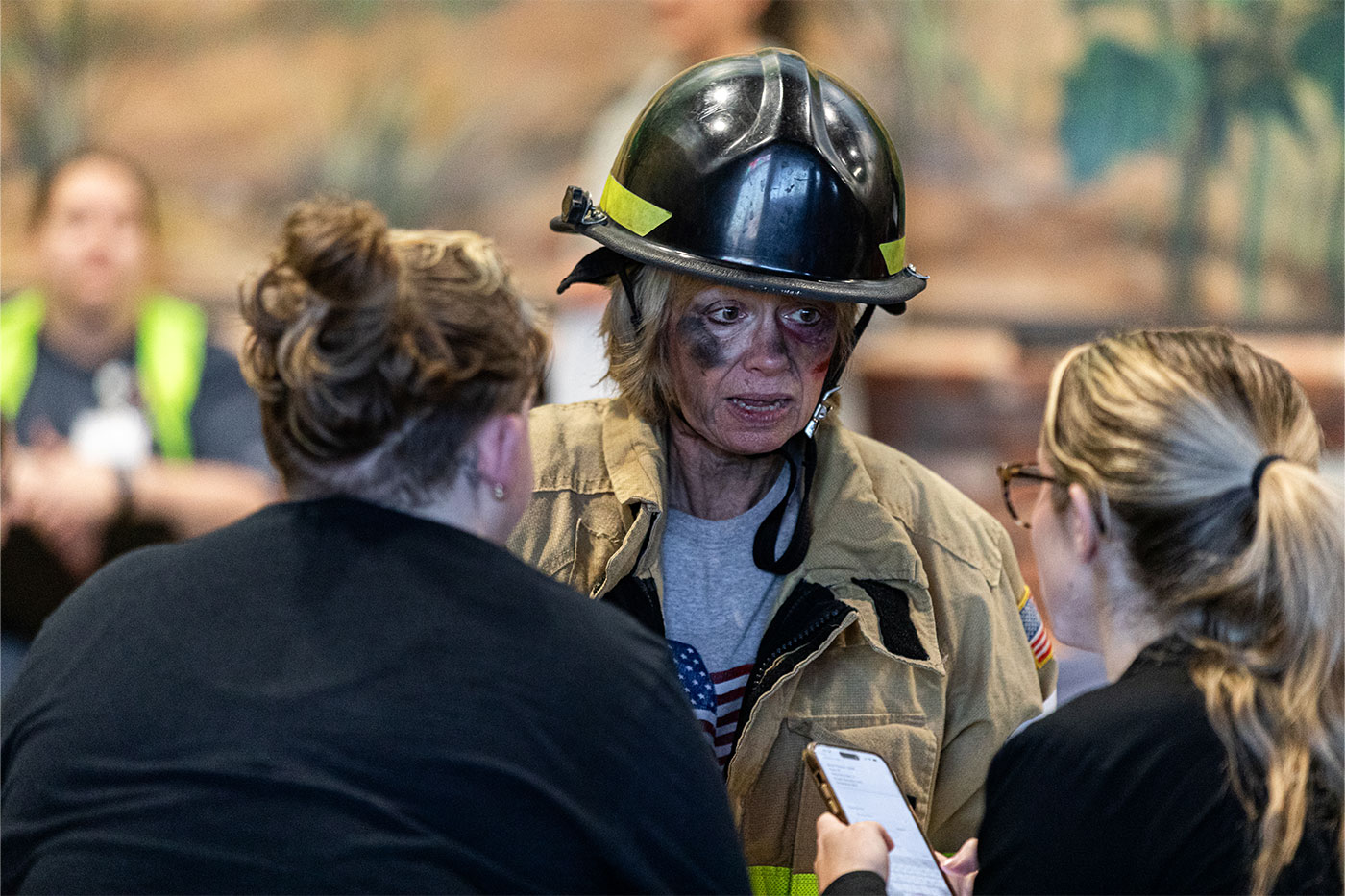
“My brother owned a chain of grocery stores and two of them were blown away that day,” Lynch recalled.
Lynch regularly works as a simulated patient for TTUHSC, attending events like Disaster Day and clinical practices, too. For her and others, it’s a way to give back to the community.
“We get to impact medicine for the next generation because of what we do here today,” said Pam Moore, an event volunteer of 10 years.
Instrumental Innovation
As volunteers check in, they are assigned a character, embodied in a “case.” Each character has an overt injury or bodily trauma, but they also have an underlying medical condition and some information about their lives, occupations, or other important context. This is done to keep the medical and nursing students on their toes, ensuring they take a full history.
One young acting major has a wooden stick taped to his stomach. When the simulation starts, he plays a patient who has been impaled in the abdomen with flying debris. The catch: he is HIV positive.
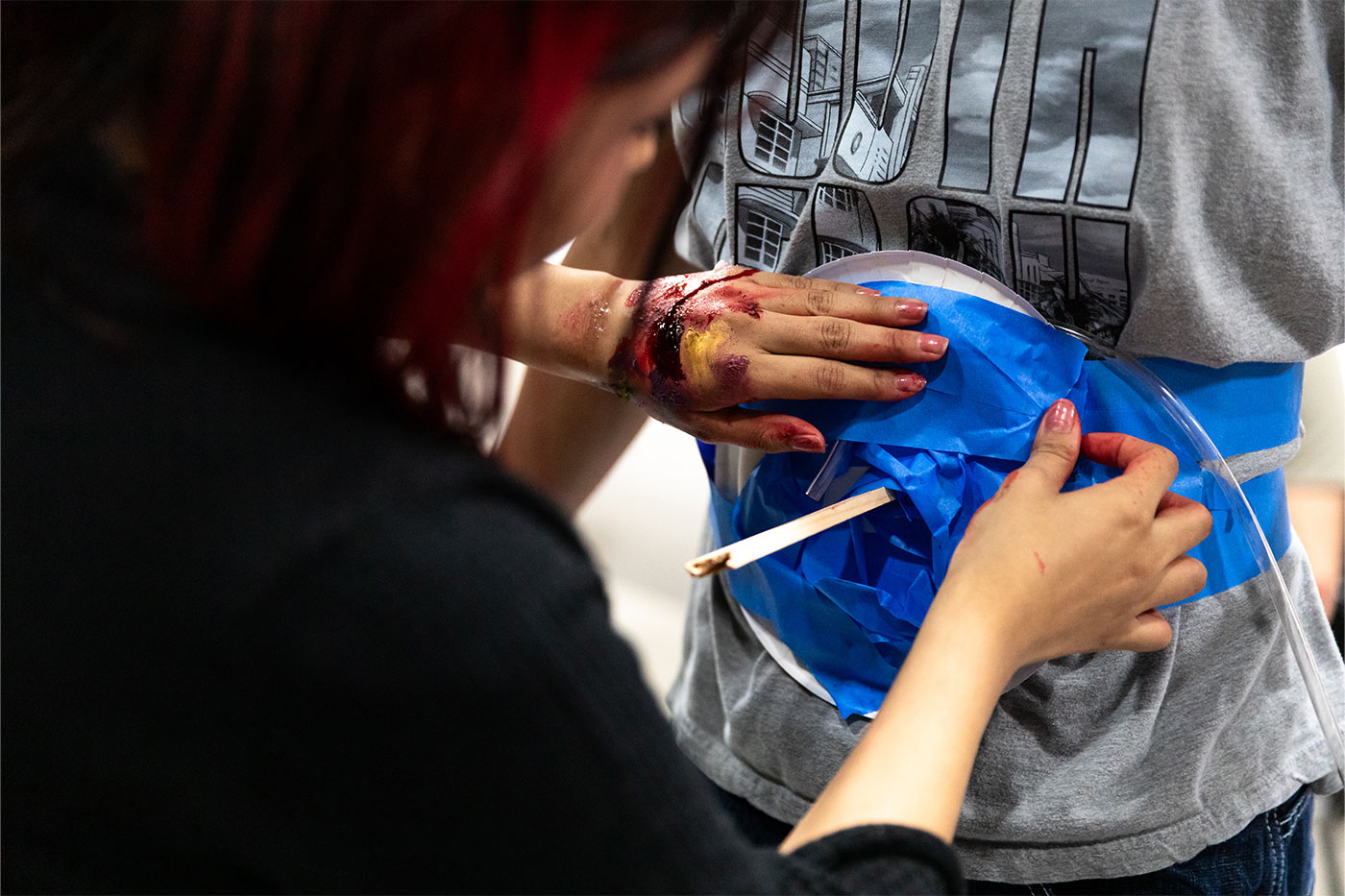
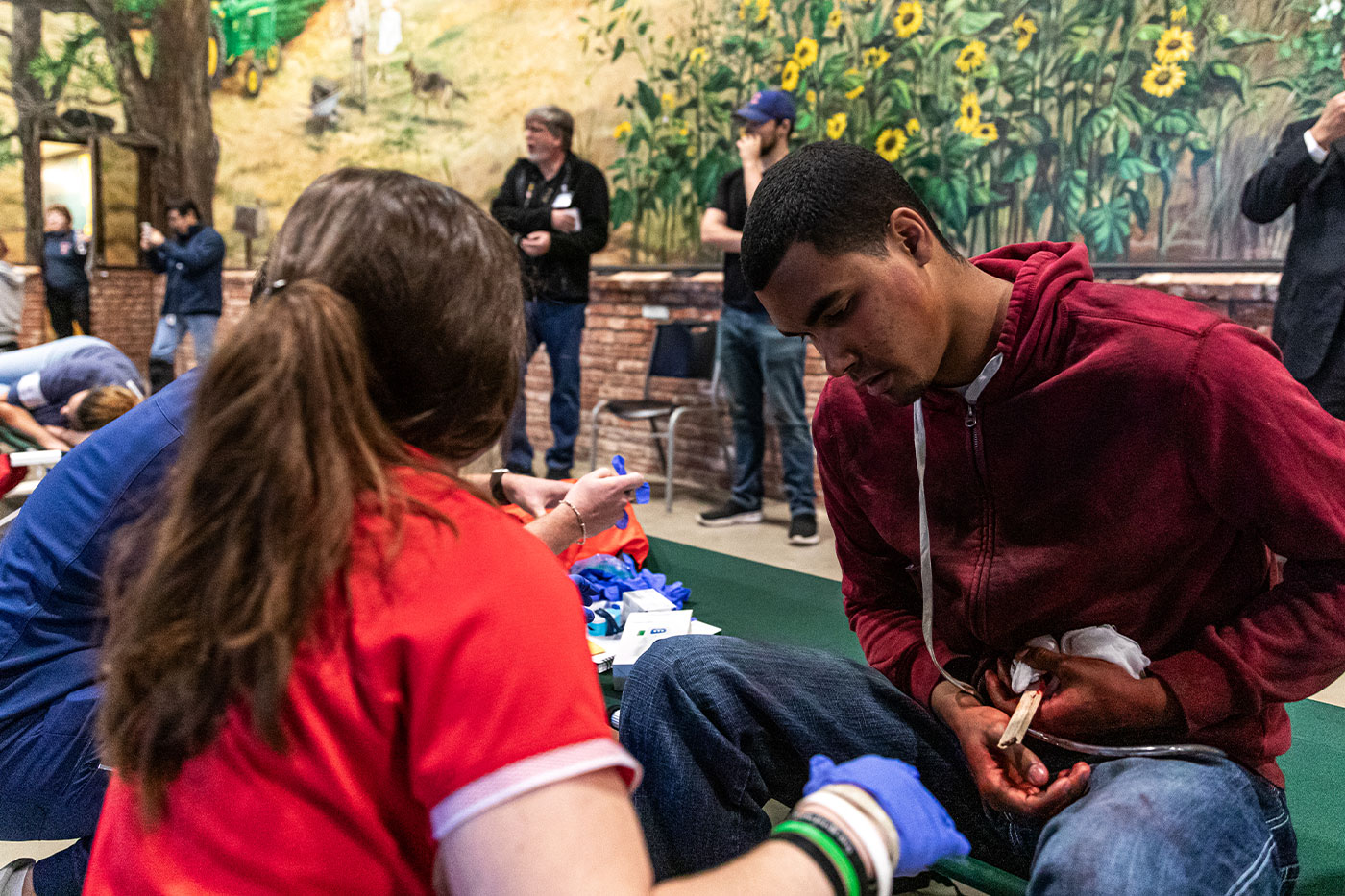
Some patients have physical injuries, others need psychiatric help, others require social workers. There is a character for every participant and their field of practice.
“For some HSC students, this is their very first time interacting with a live patient,” Prucha said. “Our actors try to provide that real human touchpoint.”
The added human element is vital.
“There are variables you’ll only get with a real-life human patient,” Prucha added. “The stories are driven by narratives of real people and their experiences.”
This kind of hands-on experience puts Texas Tech ahead of the curve.
According to research from the National Institutes of Health, tested role play in medical specialties has been found to be a powerful education tool. Studies show that simulating real scenarios enables students to apply skills and knowledge in real time.
A simulation also allows participants the opportunity to practice an exceptionally difficult aspect of the job – breaking bad news to patients. In the tornado simulation, not every case had a simple solution with a positive outcome.
Nursing student Karley Kieschnick participated in her first simulation at Disaster Day.
“The simulation showed me that as much as we practice, every disaster is different,” Kieschnick said. “I don’t think I realized how truly chaotic it can be and how important it is to stay calm. These patients are going through some of the worst moments in their life and it’s our job to be a reassuring presence.”
Kieschnick said if she hadn’t known the patients were actors going in, she would have been fooled.
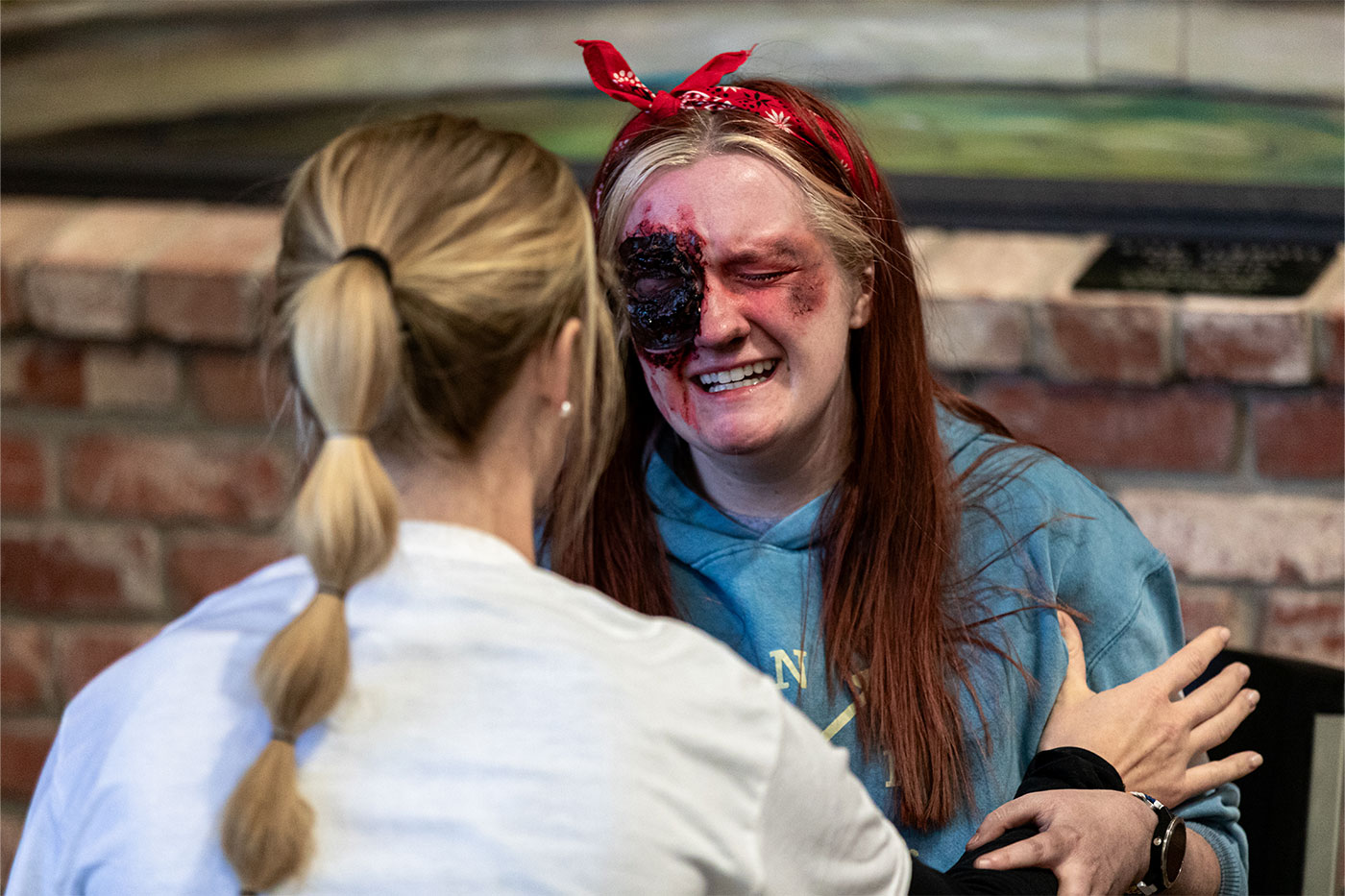
“The students from the School of Theatre & Dance were phenomenal,” she said.
Kieschnick had one patient who was nonverbal and another who had cerebral palsy and a head injury. Neither were easy cases. She was impressed with the actors’ ability to stay in character, saying it was the perfect opportunity to practice prioritizing care, understanding patients and collaborating with other medical personnel.
Moving Forward
Prucha is working down a long list of organizations requesting simulated training.
“We know this training is effective, and I want to steward it as well as I can, amplifying and augmenting the training available to theatre students in turn” Prucha said. “Everyone wants a high standard of care when they see a doctor.”
Through Prucha’s own experiences, she is interested in offering the skills of her trade to help elevate medical care and interaction. These soft skills are important, but also require real humans to practice on.
Prucha says what artists, doctors and first responders all have in common is the desire to better the human condition. That’s what she hears over and over at simulations.
“The J.T. & Margaret Talkington College of Visual & Performing Arts is proud of our involvement and participation in Disaster Day,” said Martin Camacho, dean of the college.
“It represents an example of collaboration and impact of the arts – it places our faculty and students at the forefront of innovation and community engagement, an area where the arts have no parallel.”
Students in the health care field aren’t the only ones going home with an enhanced education.
Students from the School of Theatre & Dance also gain valuable experience. The volunteer group comprises students from three classes: theatre and dance in the community, advanced movement and stage makeup.
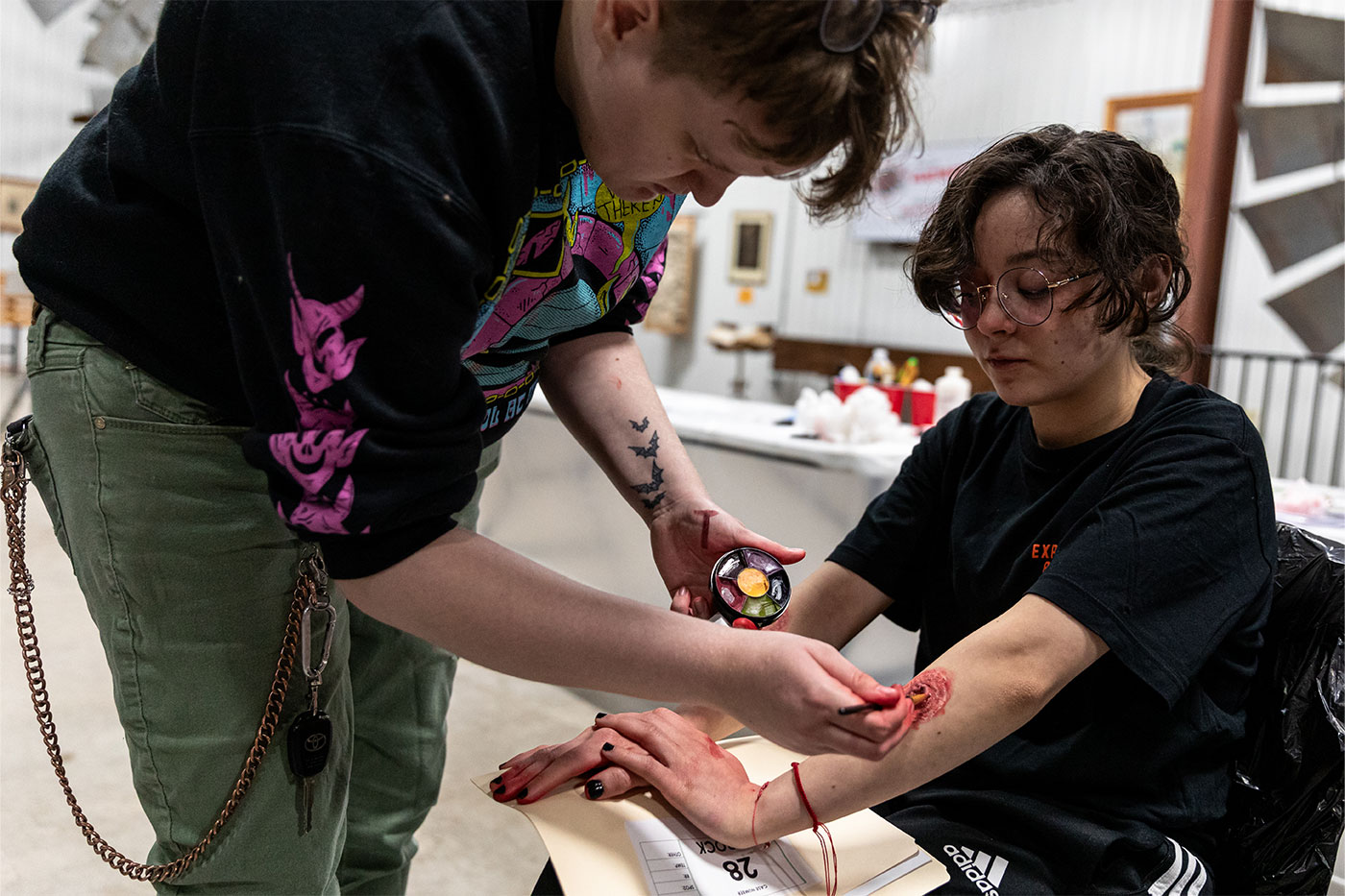
For students in the makeup course, Disaster Day mimics the environment of a film set. It’s fast-paced, demanding, and touch-ups are required as the day goes on. Actors in the advanced movement course gain experience in improvisation and working with a live audience, so to speak. Students from the community course work the registration tables and help plan the logistics of the day, which also gives them the opportunity to apply skills learned in coursework to an alternate industry.
“This adds real value to their education and celebrates the core of our work as theatre professionals, which is always collaborative” Prucha said. “We also are inspired to know that the meaning of making impactful work has a direct translation through partnership with TTUHSC Interprofessional Education.”
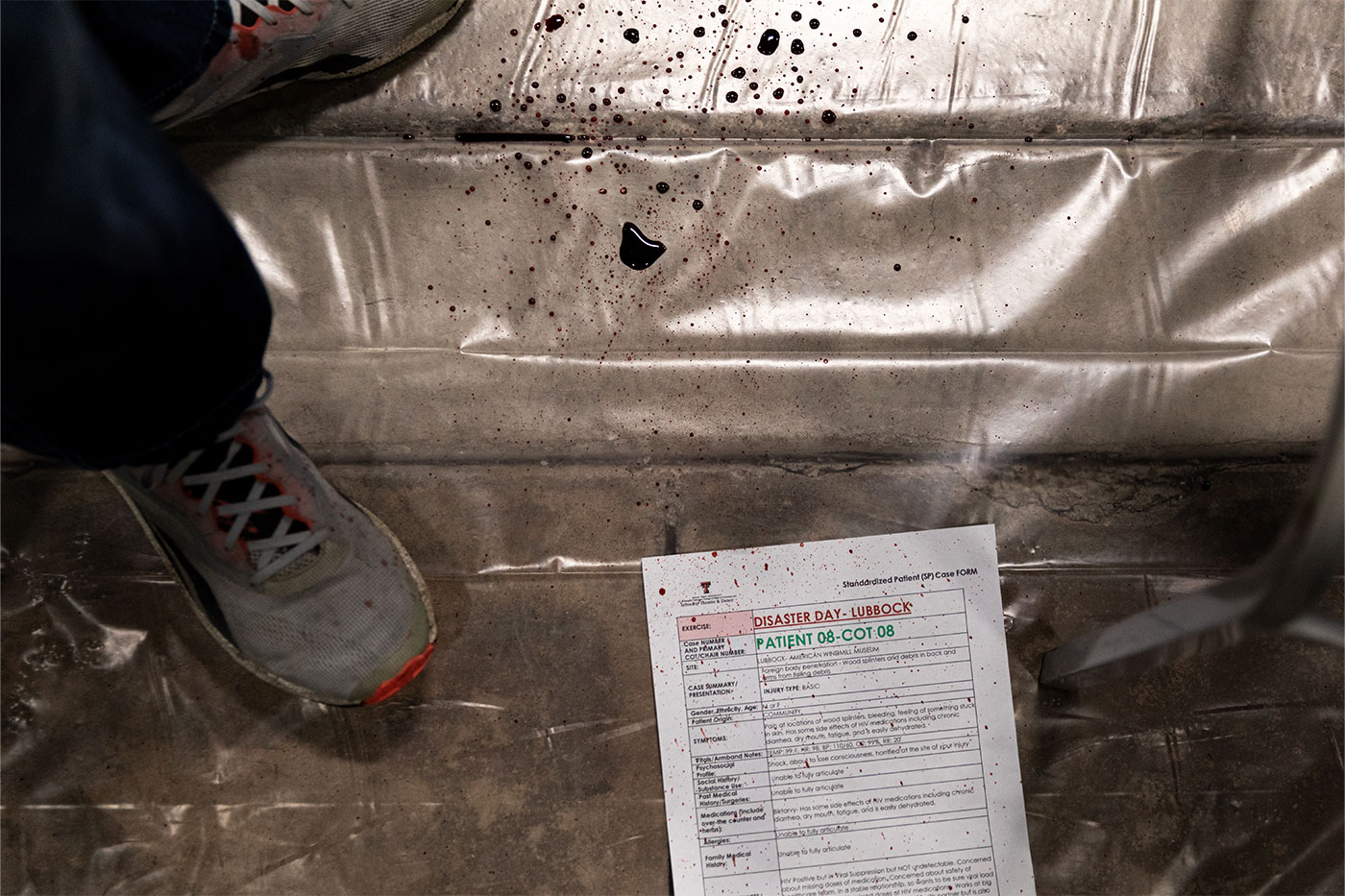
By the end of the day, hundreds of students leave exhausted but fulfilled, with new lessons learned. And while everyone hopes nothing like the tornado simulation happens in this community, if it does, future leaders are ready for it.

